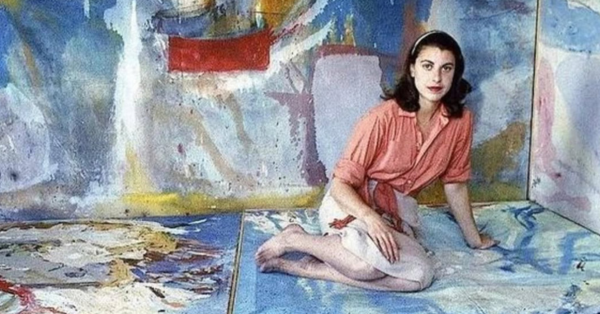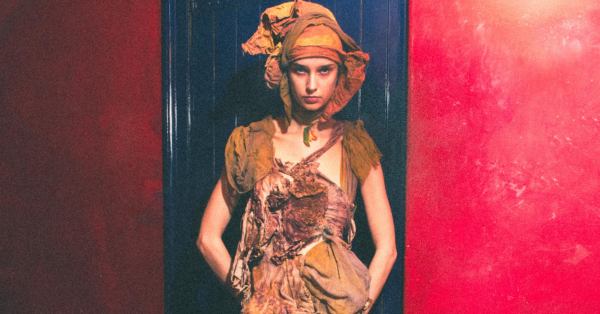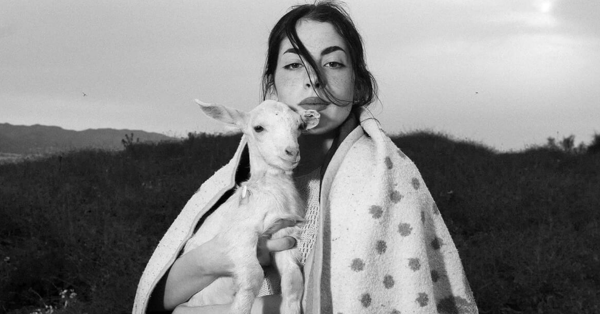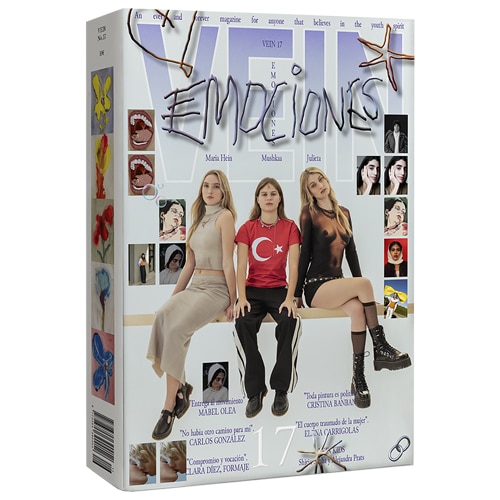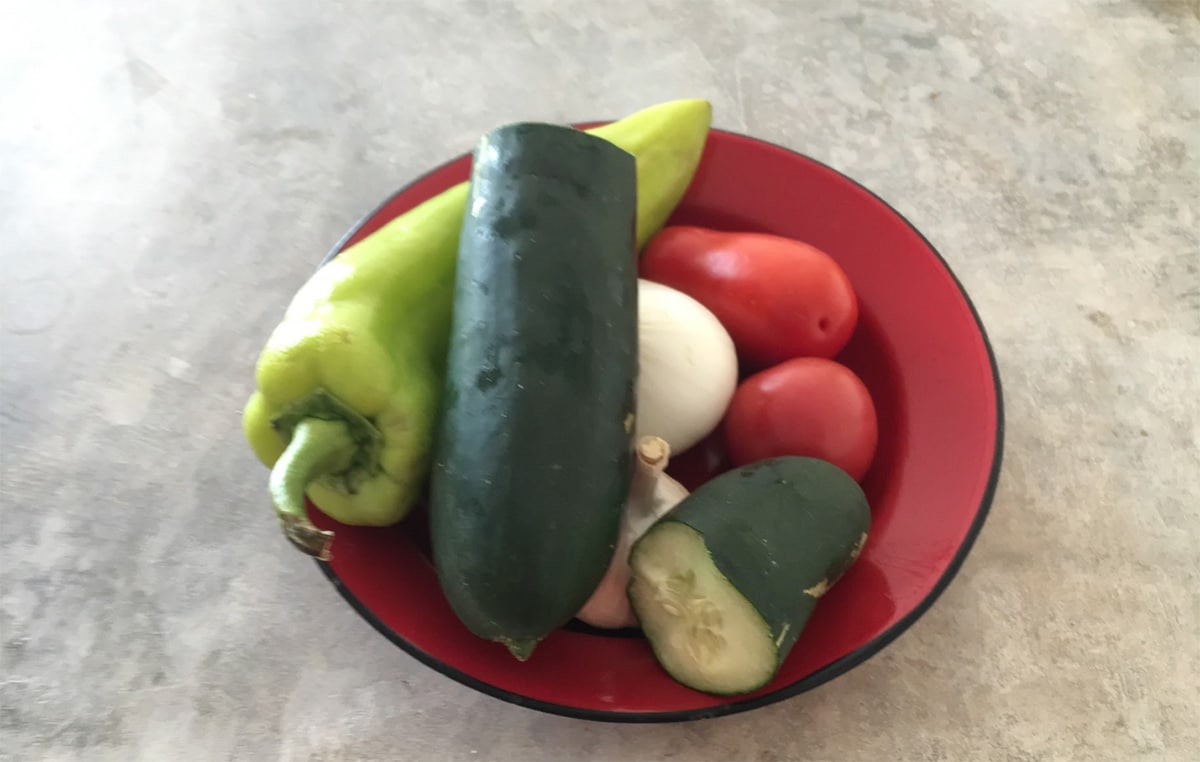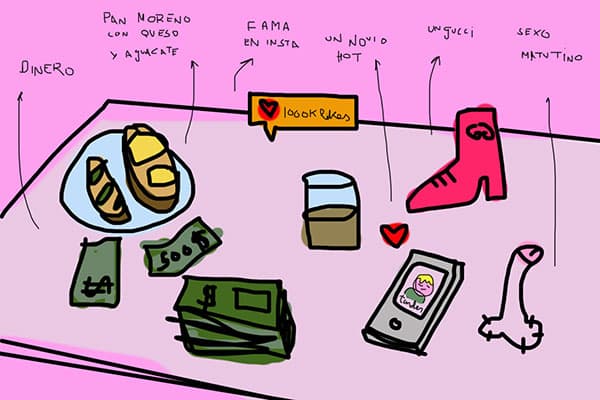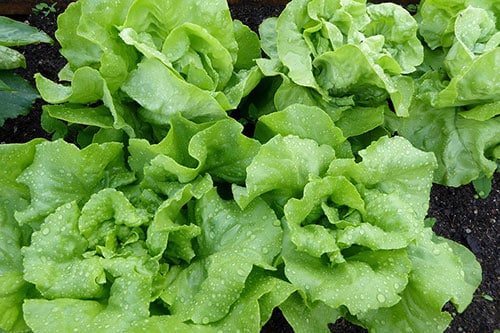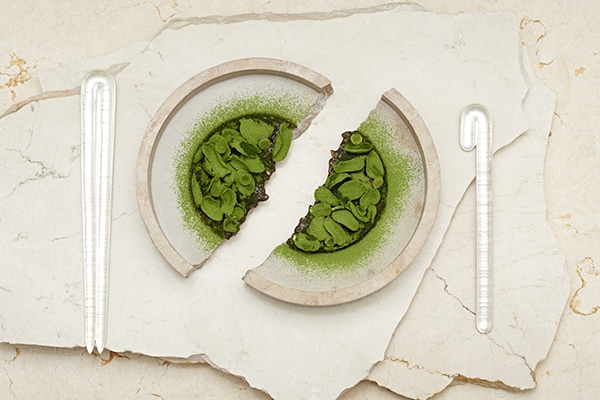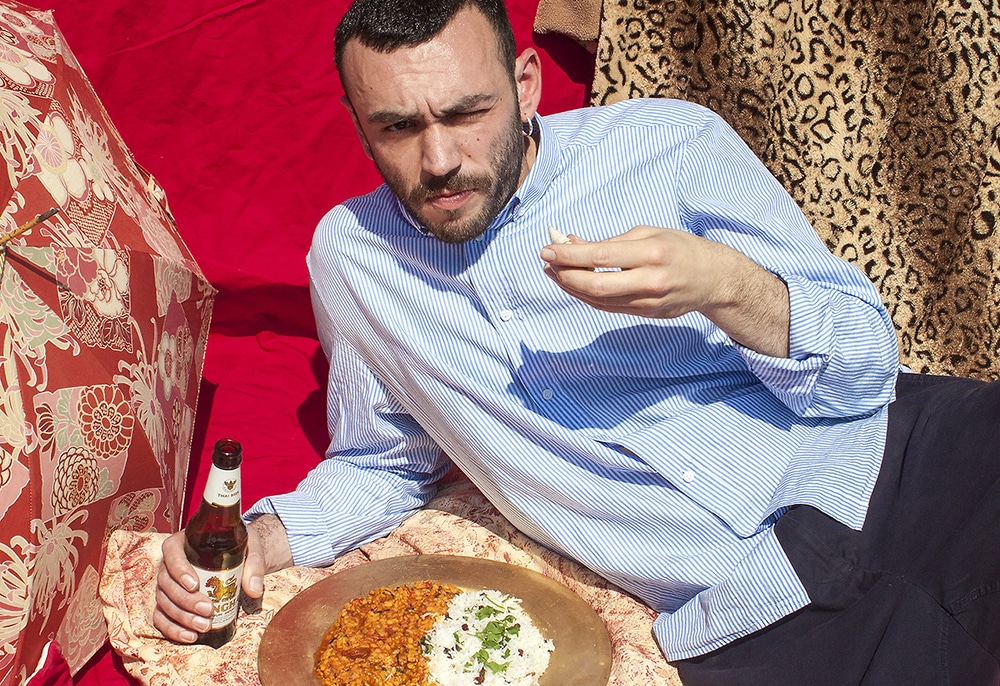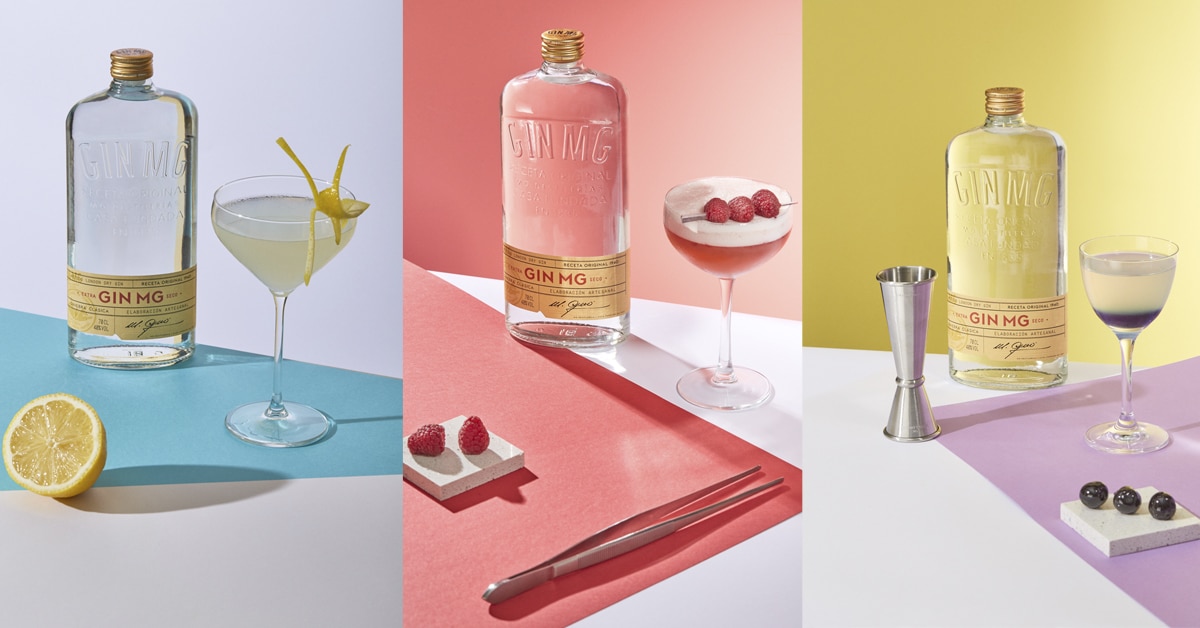SS26 in Milan shone with the richness of textures and materials. We discover them through seven key proposals.

Fendi / Prada / Jil Sander
The SS26 season will go down in history not only for the new collections, but also for the anticipation surrounding the 15 designer debuts that shook up the calendar. A particularly significant event at a time when most creative director positions at the major houses remain dominated by men. In Milan, four of those debuts took place; only one by a woman.
In this analysis, we focus on some of the richest proposals in textures, showing how materials and finishes not only give shape to garments, but also transmit each house’s identity and the vision of its designers.
The combination of experimentation, technique, and sustainability seen in Milan confirms that the city continues to be a key stage for understanding where fashion is heading. A fashion that honors its past without losing sight of the future.
Jil Sander
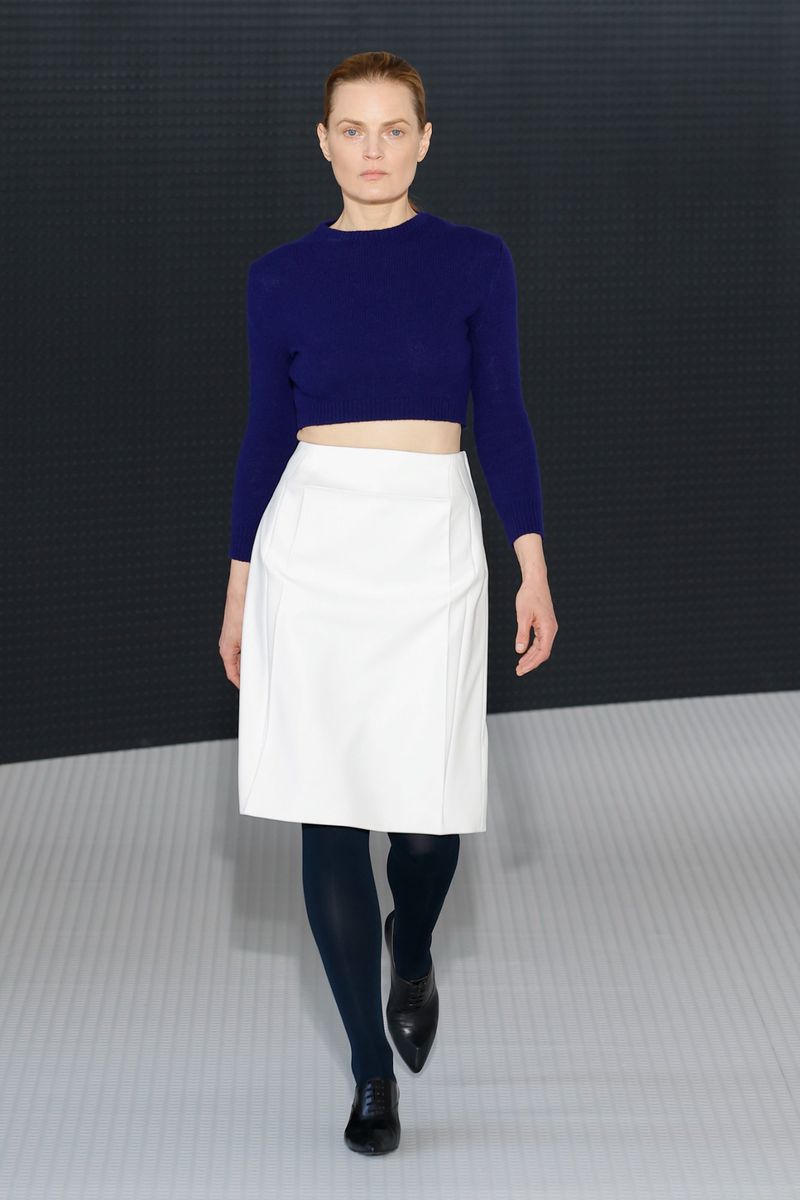
One might think textures and minimalism don’t go together. Yet, when mastered, they do. Such is the case with Simone Bellotti’s debut at Jil Sander. Some may also believe minimalism is boring or bland, but Bellotti proves otherwise: in his proposal, minimalism becomes an exercise in detail, texture, and playfulness.
Guinevere van Seenus opened the show, muse of the house and the face of the SS96 collection. Her appearance set the tone from the very start: a reconnection with Jil Sander’s essence and a bridge between the brand’s memory and the new chapter Bellotti is beginning.
A chapter built with straight lines, but not rigidly geometric, with primary colors that evoke Malevich’s work. Textures play a fundamental role: they engage with those linear silhouettes of coats, skirts, and dresses, pushing them in unexpected directions. There’s a consistency in materials and palettes, suddenly interrupted by surprise elements: sequins, metallic fabrics with a shiny finish, red floral prints, or constructions resembling the pages of stacked books. In his SS26 proposal, minimalism is perceived not only through sight, but through all senses. A precise balance between classicism, lightness, and modernity.
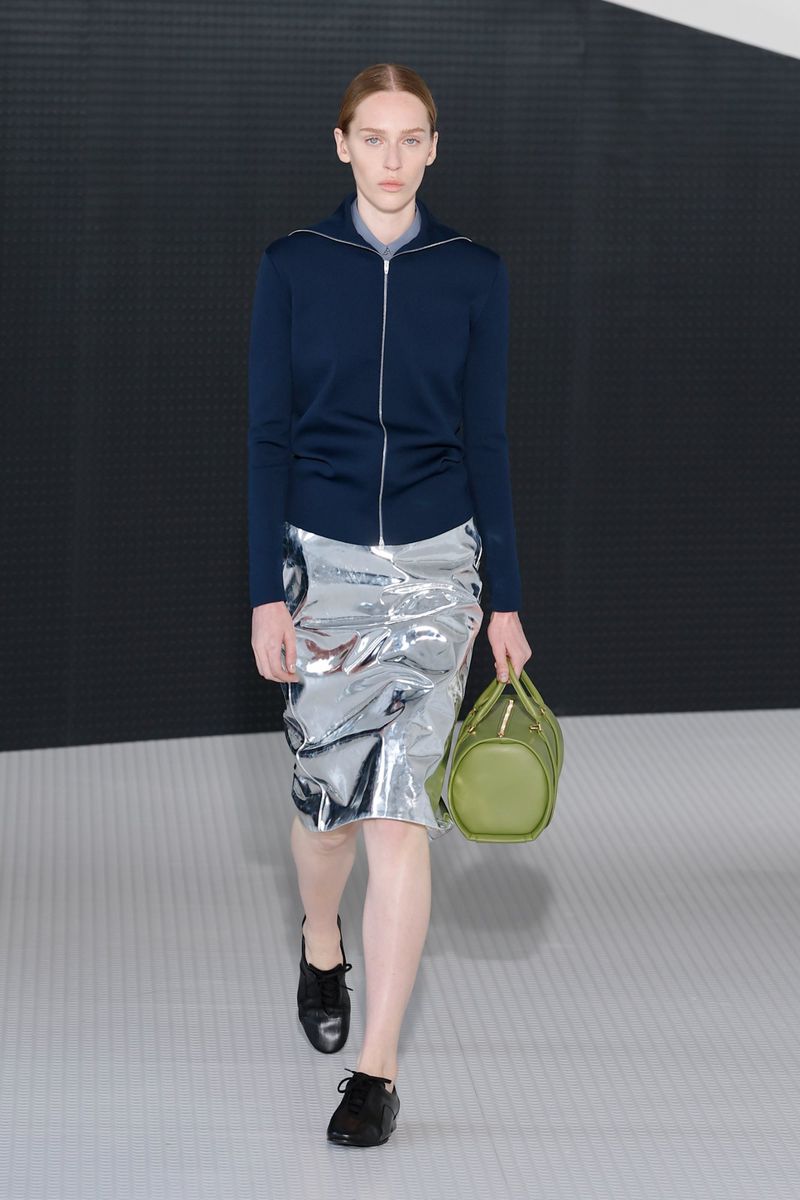
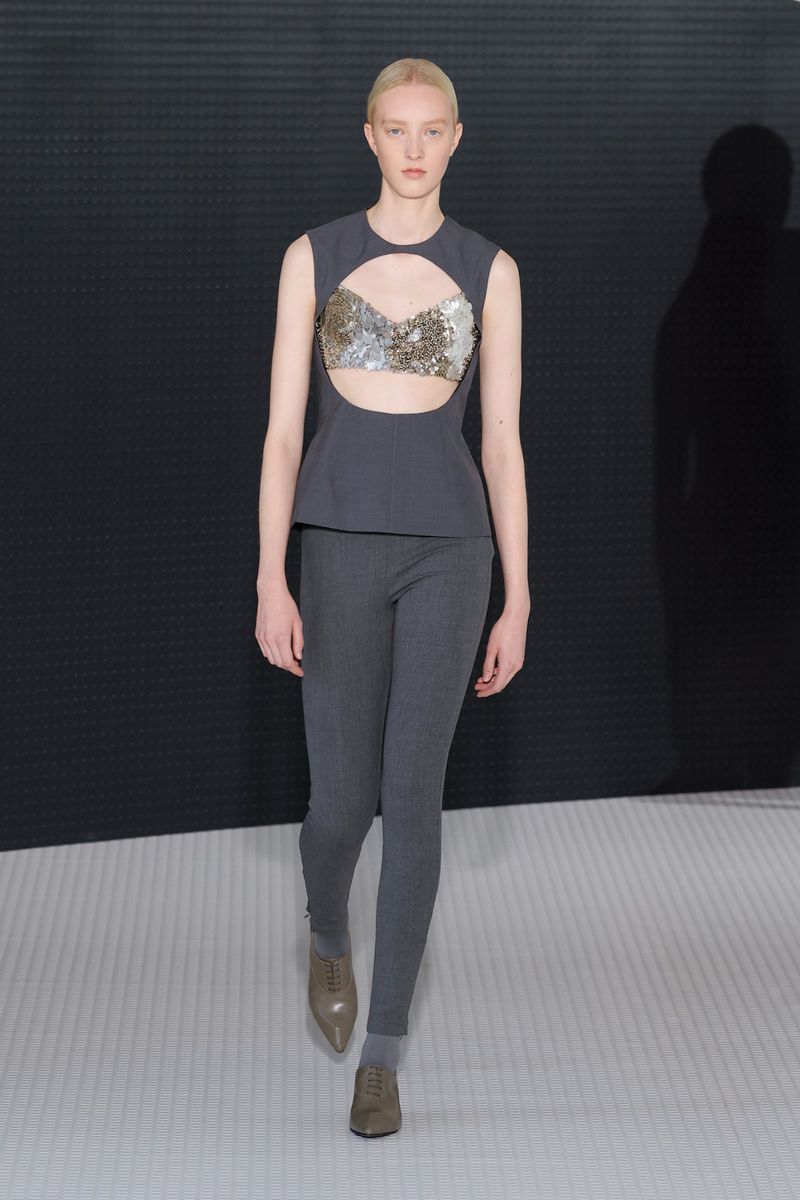
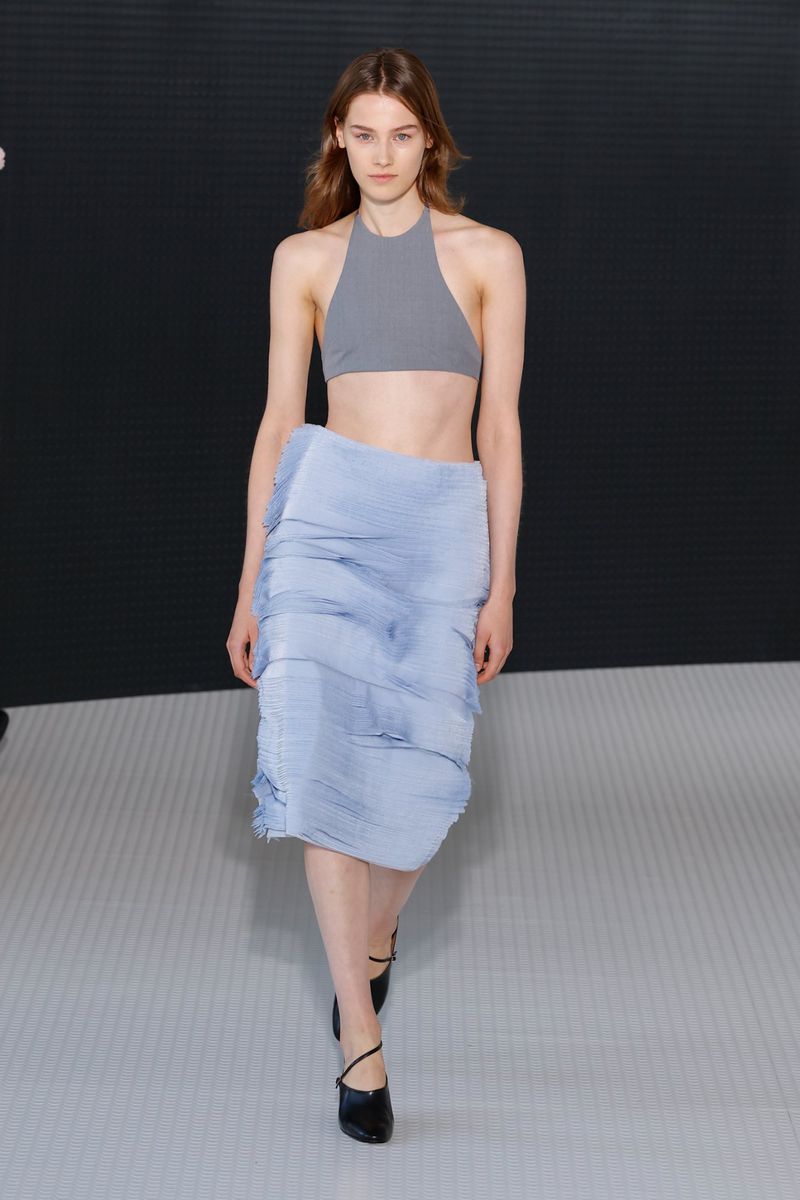
Diesel
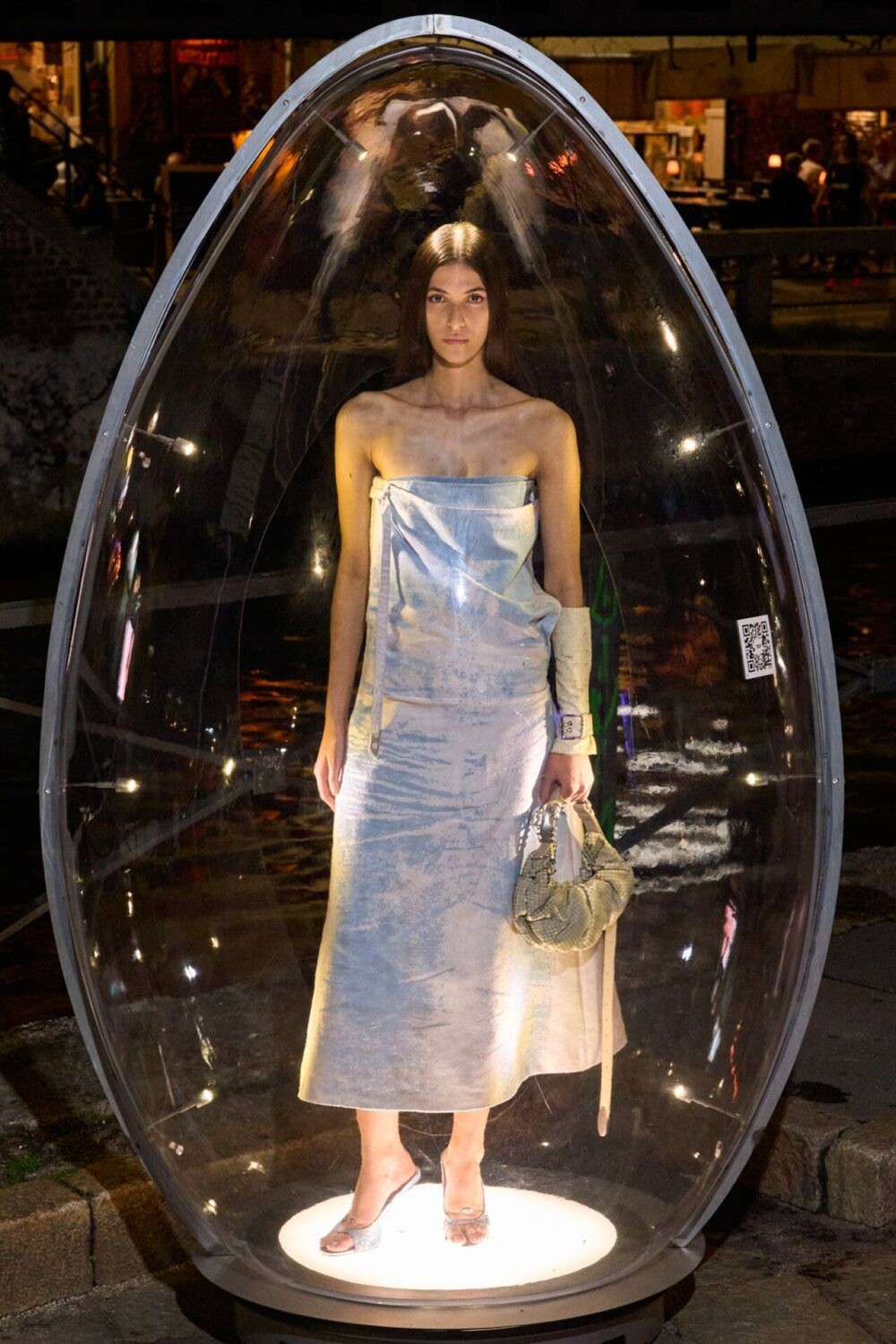
Glenn Martens adapted the staging to the brand’s codes. To do so, he reinterpreted the iconic acrylic eggs from Jurgi Persoons’ Paris presentation in 2001, transforming them into a large-scale urban experience, with models enclosed in eggs scattered throughout the city.
The collection stood out for its richness in textures, guided by the concept of the “inner animal.” Leather skirts with irregular edges, chiffon frayed at the shoulders, trompe-l’oeil sweaters held together only by open seams—dialoguing with double-layer garments that revealed interiors, altering silhouettes and creating depth. Denim was another field of experimentation: bleached and laser-treated to simulate wear, applied to dresses, jackets, and coats with deconstructed straps.
With this proposal, Martens reaffirms that Diesel remains rebellious, experimental, and unafraid to speak from within.
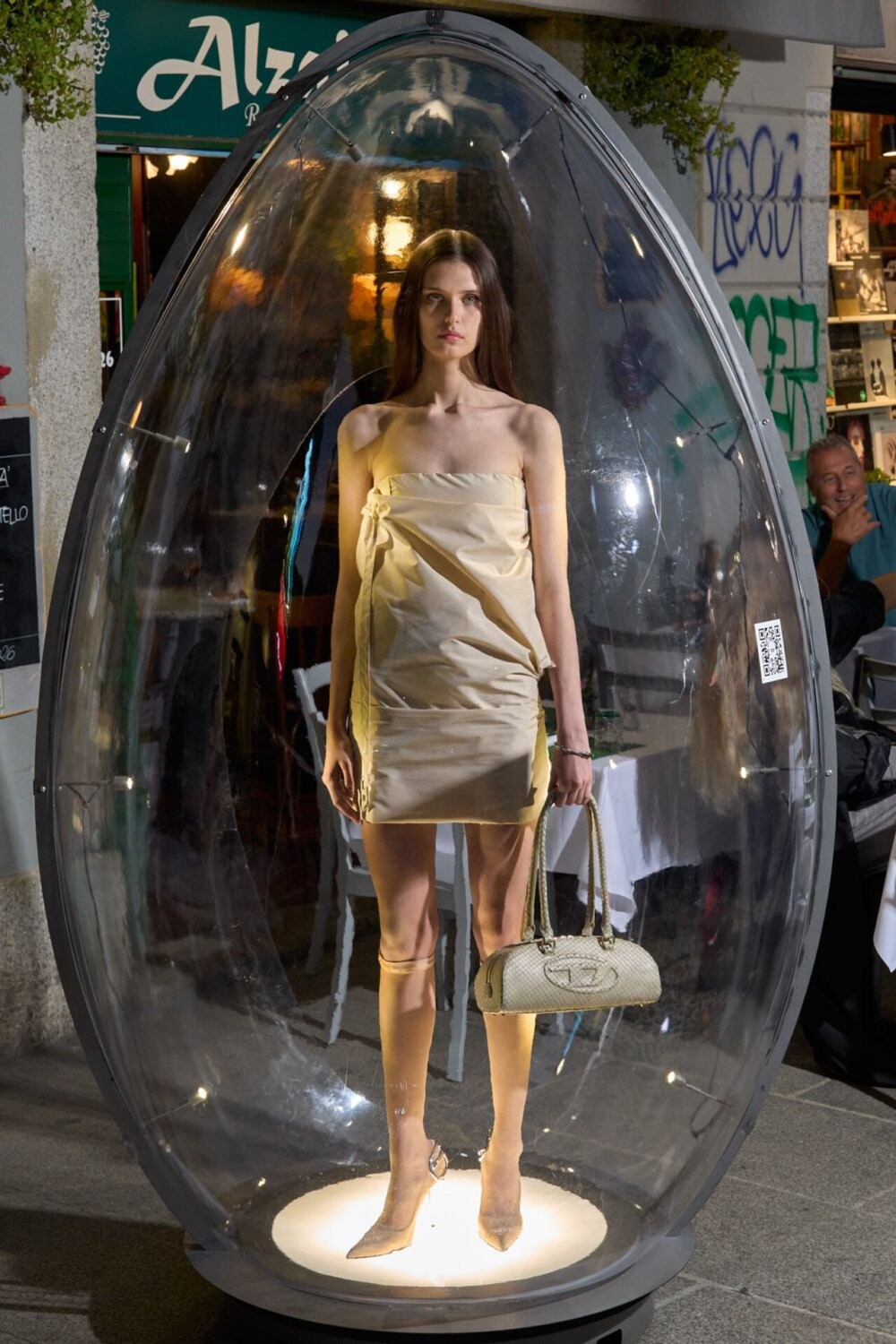
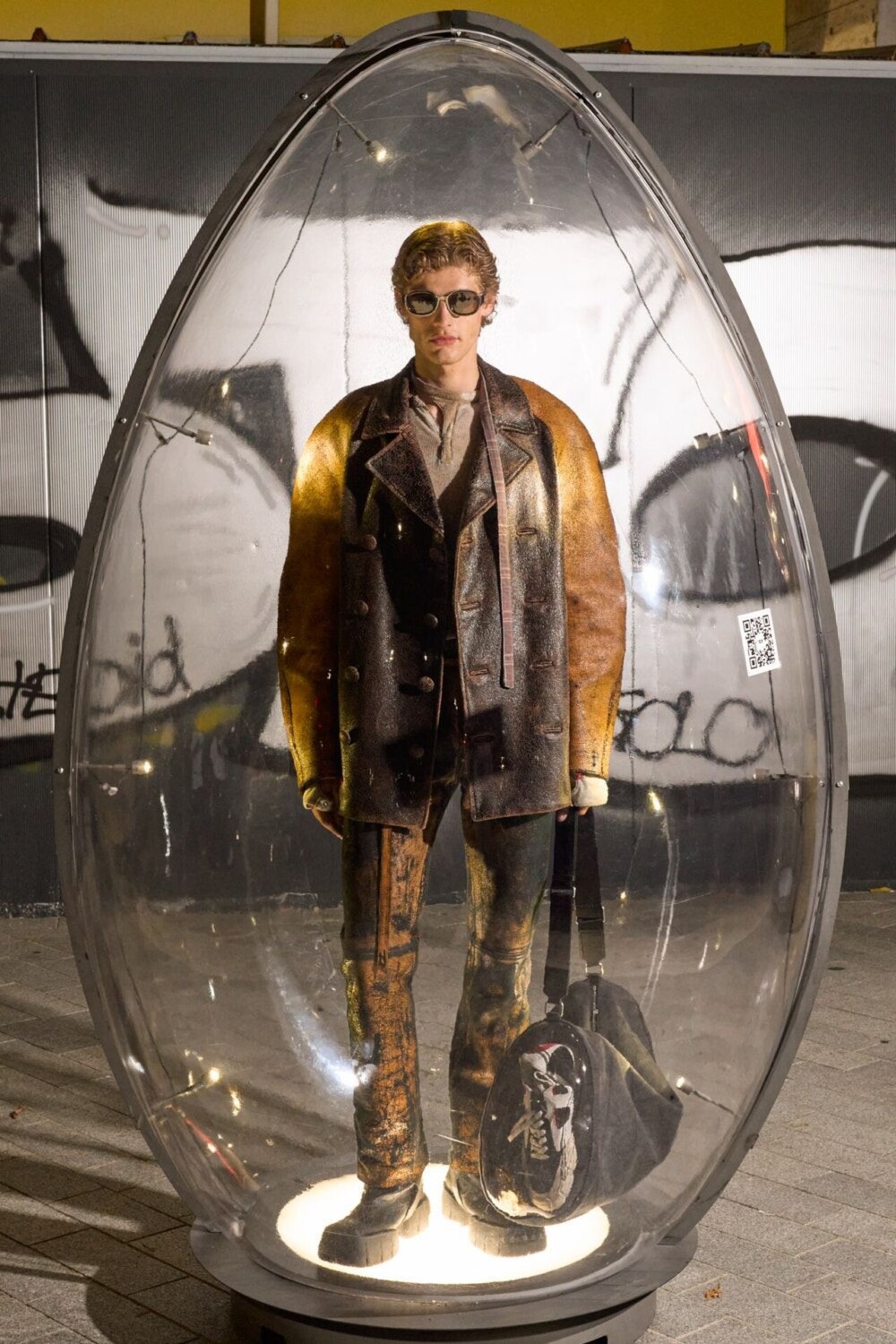
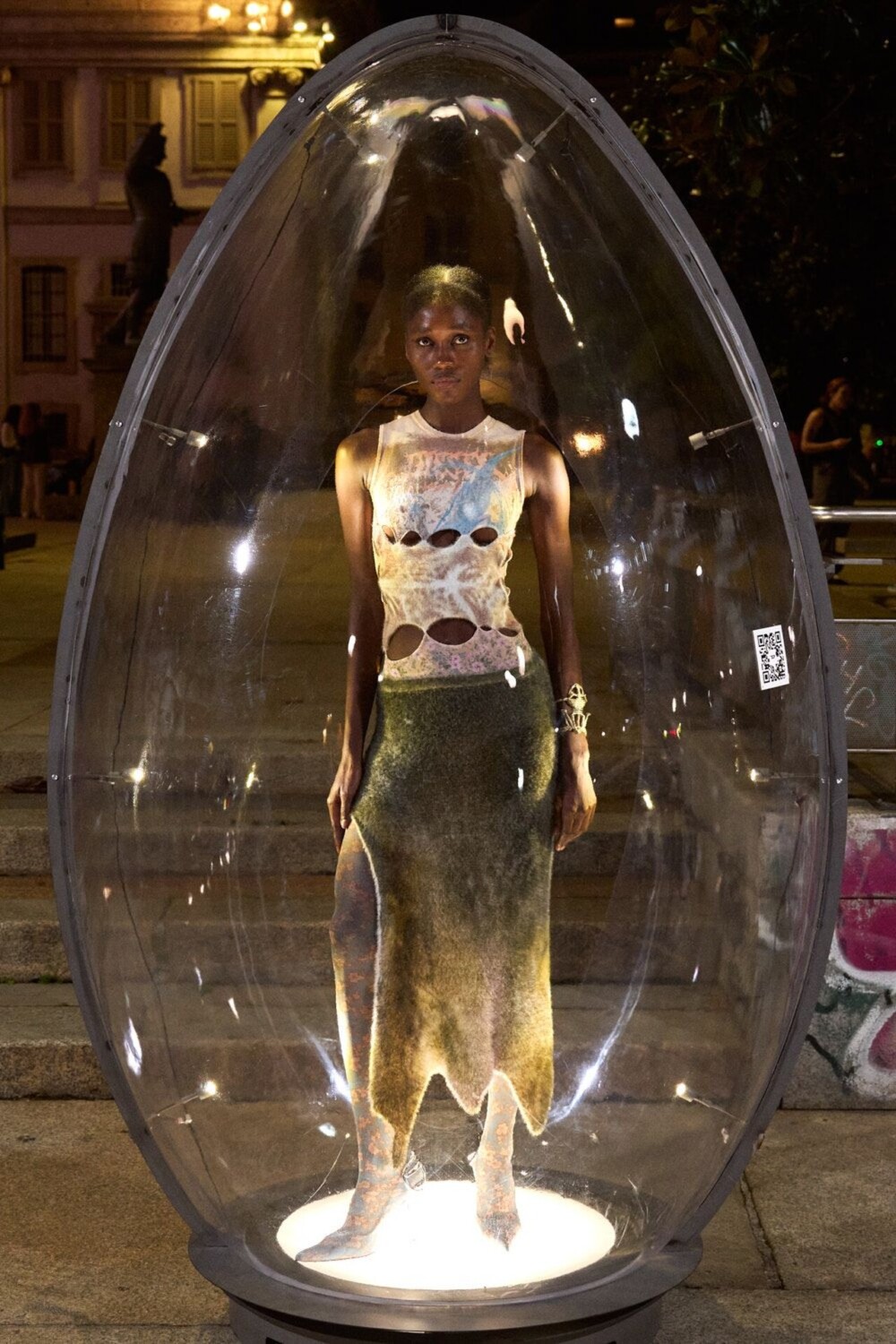
Fendi
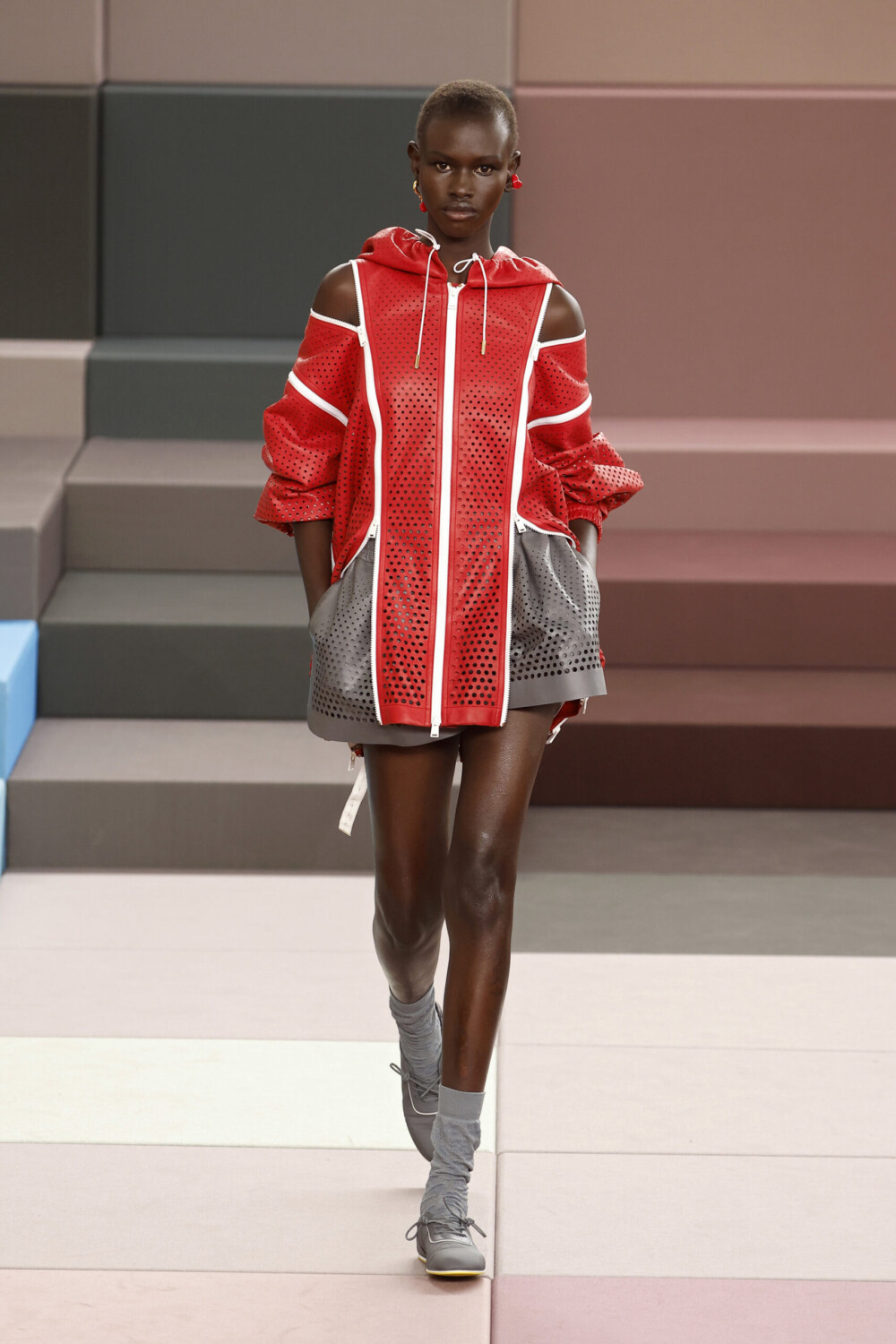
MILAN, ITALY – SEPTEMBER 24: A model walks the runway at the Fendi fashion show during the Milan Womenswear Spring/Summer 2026 on September 24, 2025 in Milan, Italy. (Photo by Estrop/Getty Images)
Fendi projected modern-era optimism onto the runway. In a set evoking the pixels of an enlarged image, colors filtered into the garments, building a luminous and joyful proposal.
Silvia Fendi transformed the functionality of sportswear into unexpected pieces, perhaps aiming to offer a more optimistic view of the modern (or postmodern) age we live in. On fabric, layered prints conveyed a digital feel, reminiscent of images magnified on a screen. The daisy became the leitmotif, appearing on bags, coats, and skirts, as well as in subtle details: open bags resembling flower petals or delicate lace shirts. A call to that optimism that is just about to bloom.
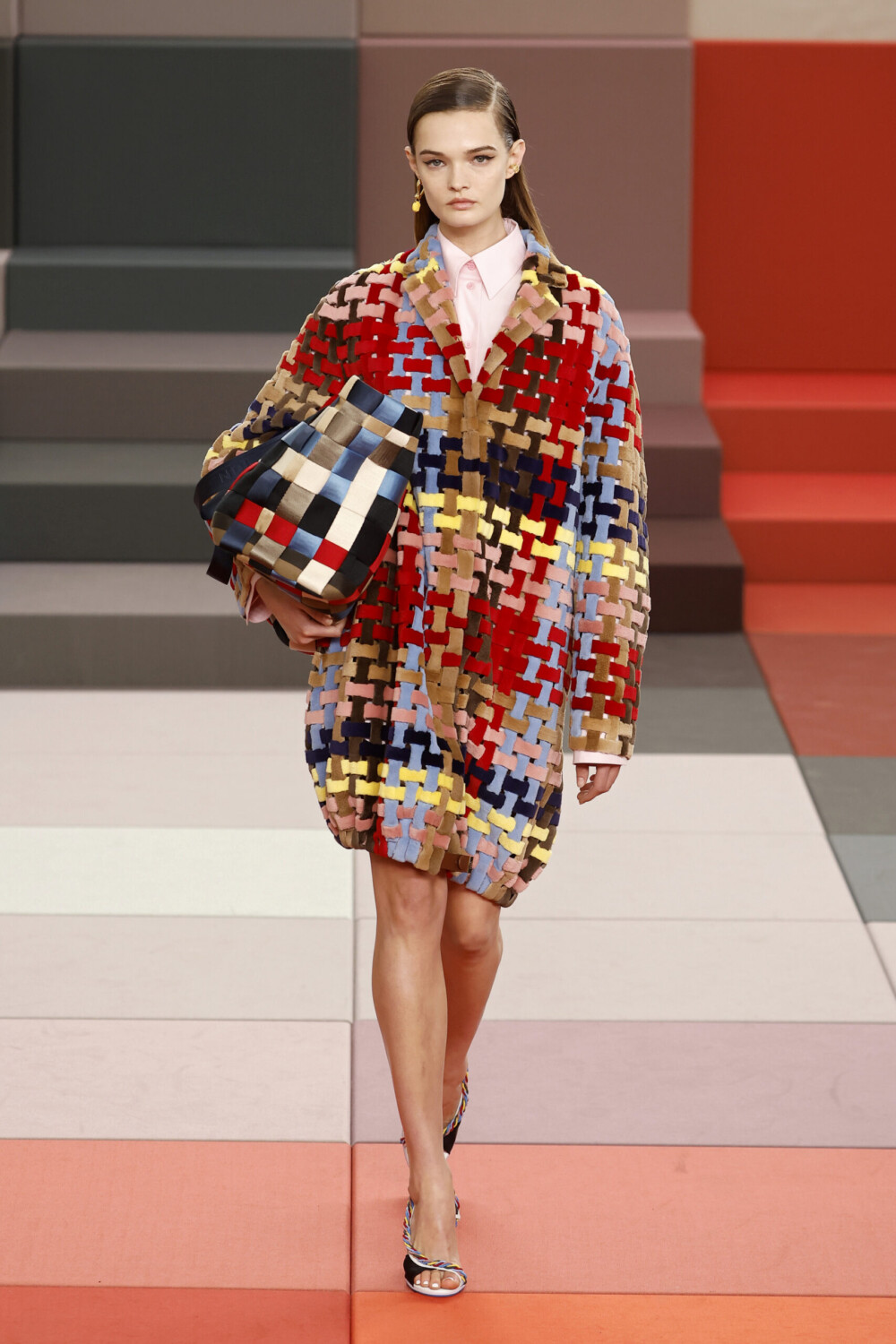
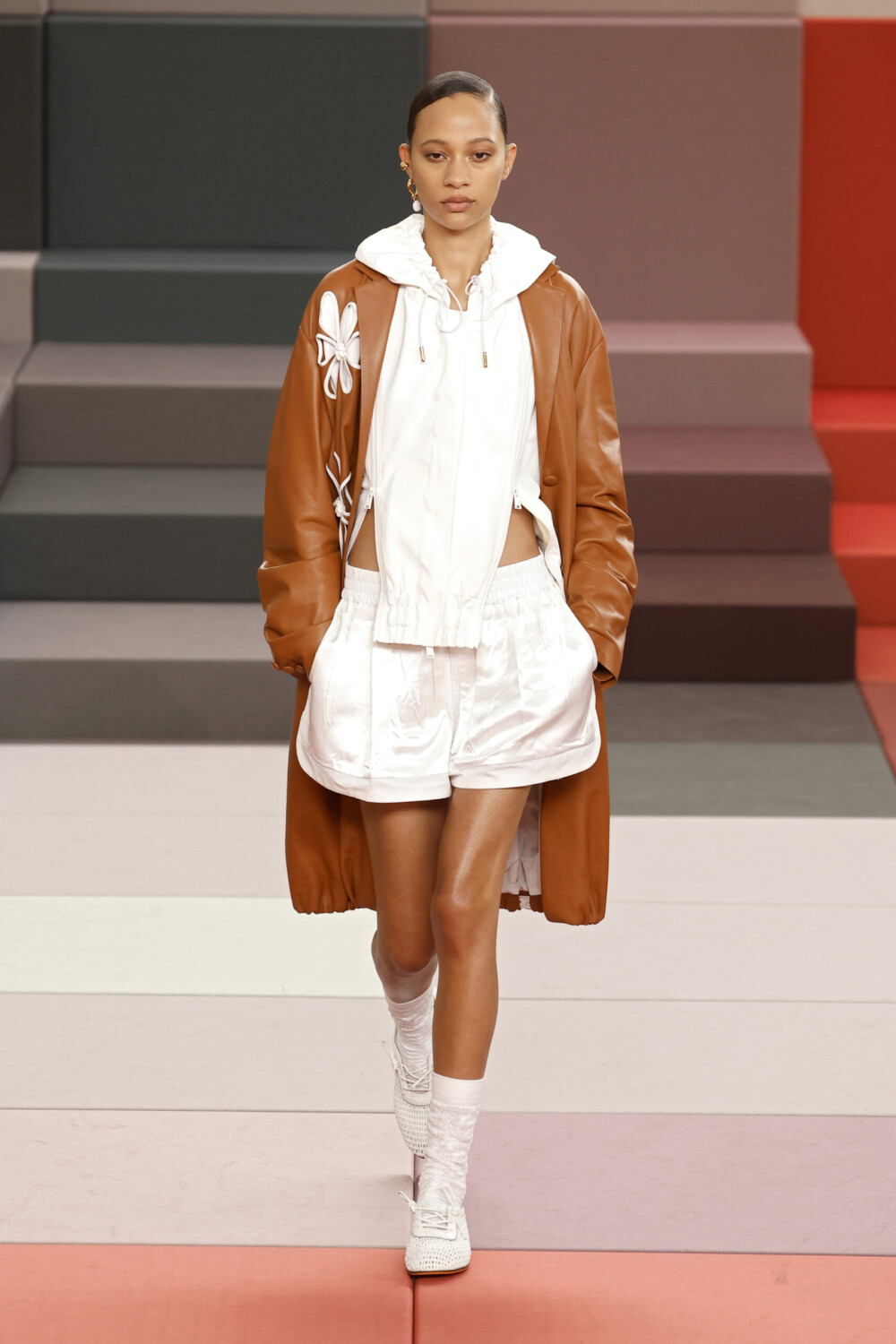
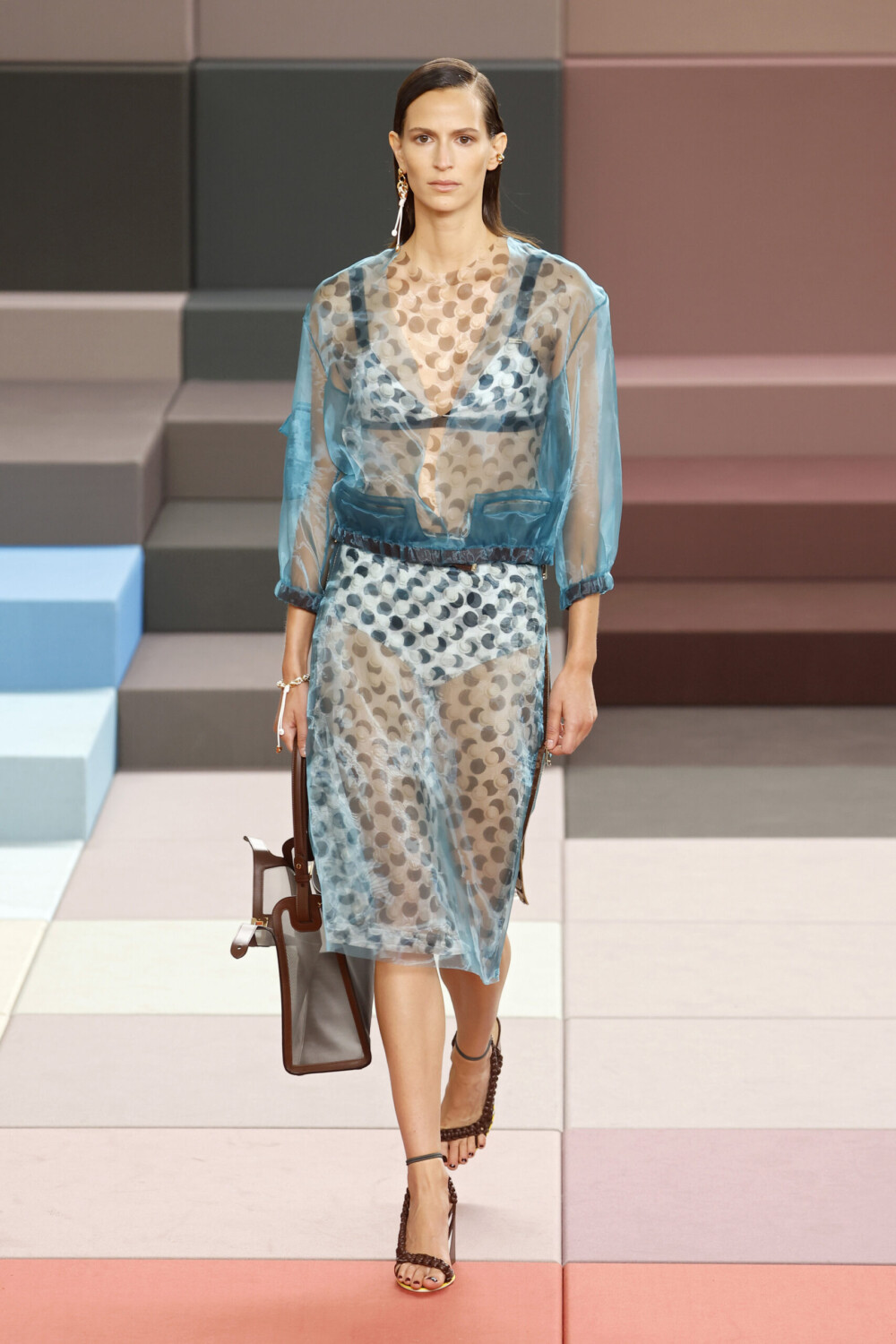
Prada
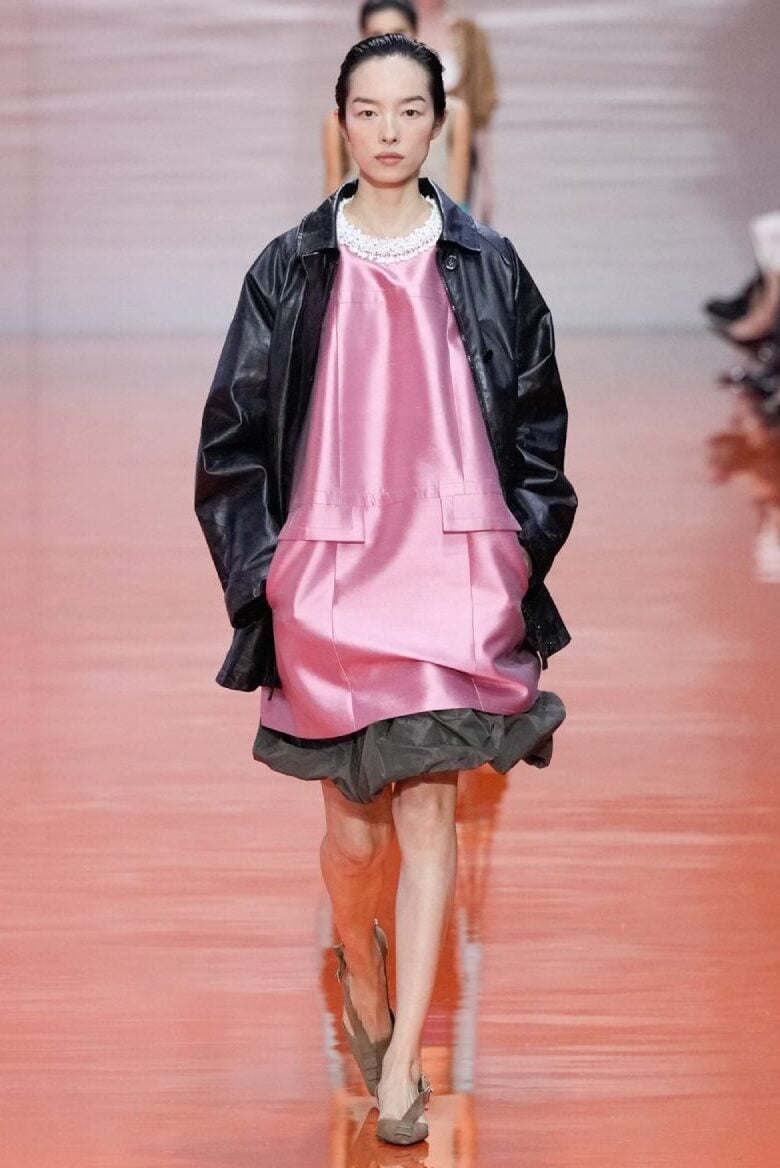
Prada not only returns to basics: it redefines the essential wardrobe with versatile pieces, adaptable to different contexts and easily combined, forming a “ready-to-wear” proposal in the most literal sense, without artifice or unnecessary embellishment.
After five years of collaboration, Miuccia Prada and Raf Simons once again consolidate their unique creative balance: Prada’s philosophical tenderness merges with Simons’ subversive elegance, in a collection where every garment is conceived as a gesture of clarity amid the visual excess and speed of our times.
The collection is enriched by a play of textures and constructions: satin midi dresses with balloon skirts, overlays resembling the skeleton of a skirt placed over more structured ones. The color palette—varied but not flashy, with black and gray as central axes—set the pace on the runway.
Prada and Simons continue to strip away the superfluous, designing a new elegance that does not seek novelty, but rather a new meaning for clothing—pieces that breathe with the speed of change while remaining functional, personal, symbolic.
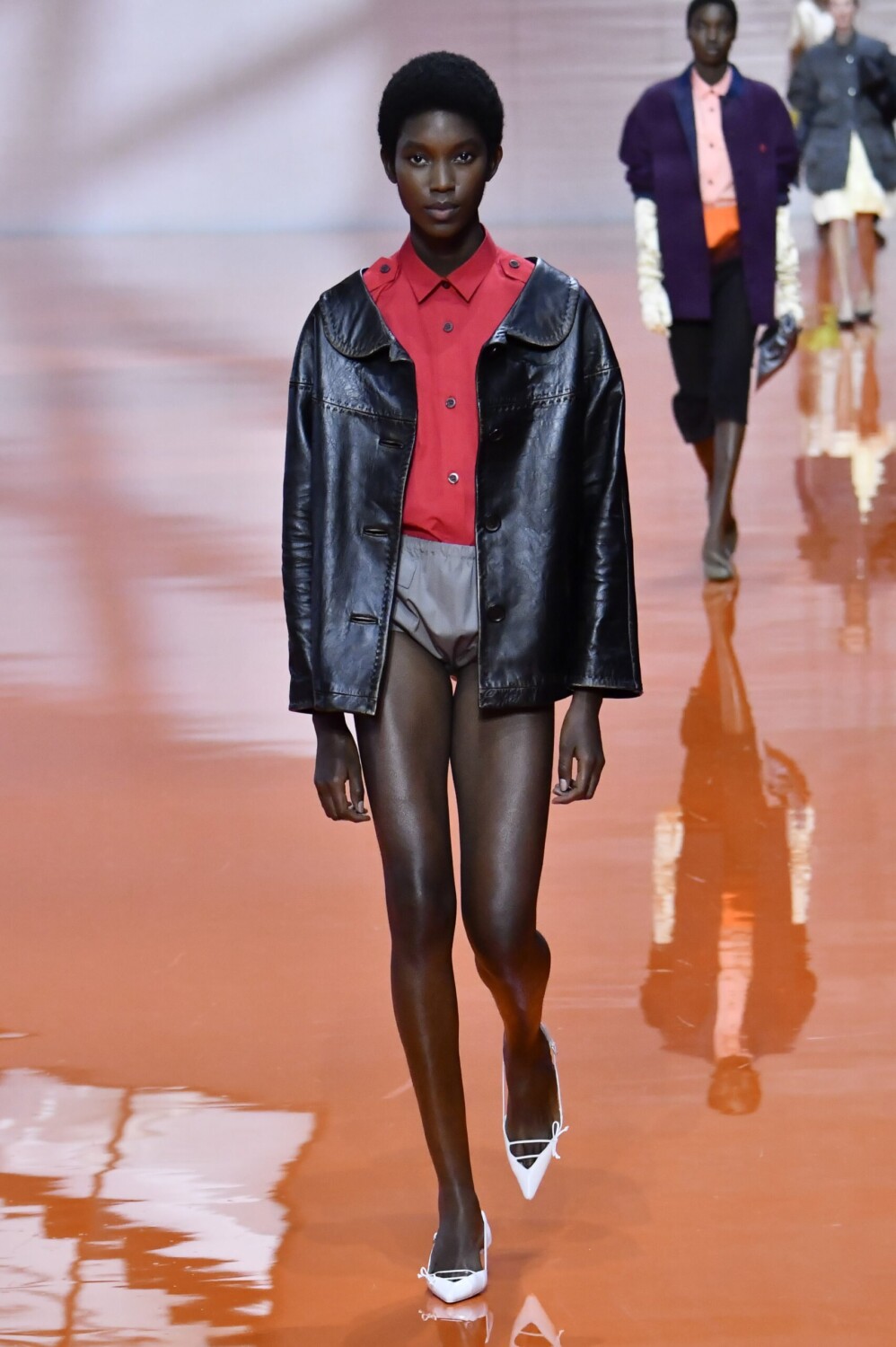
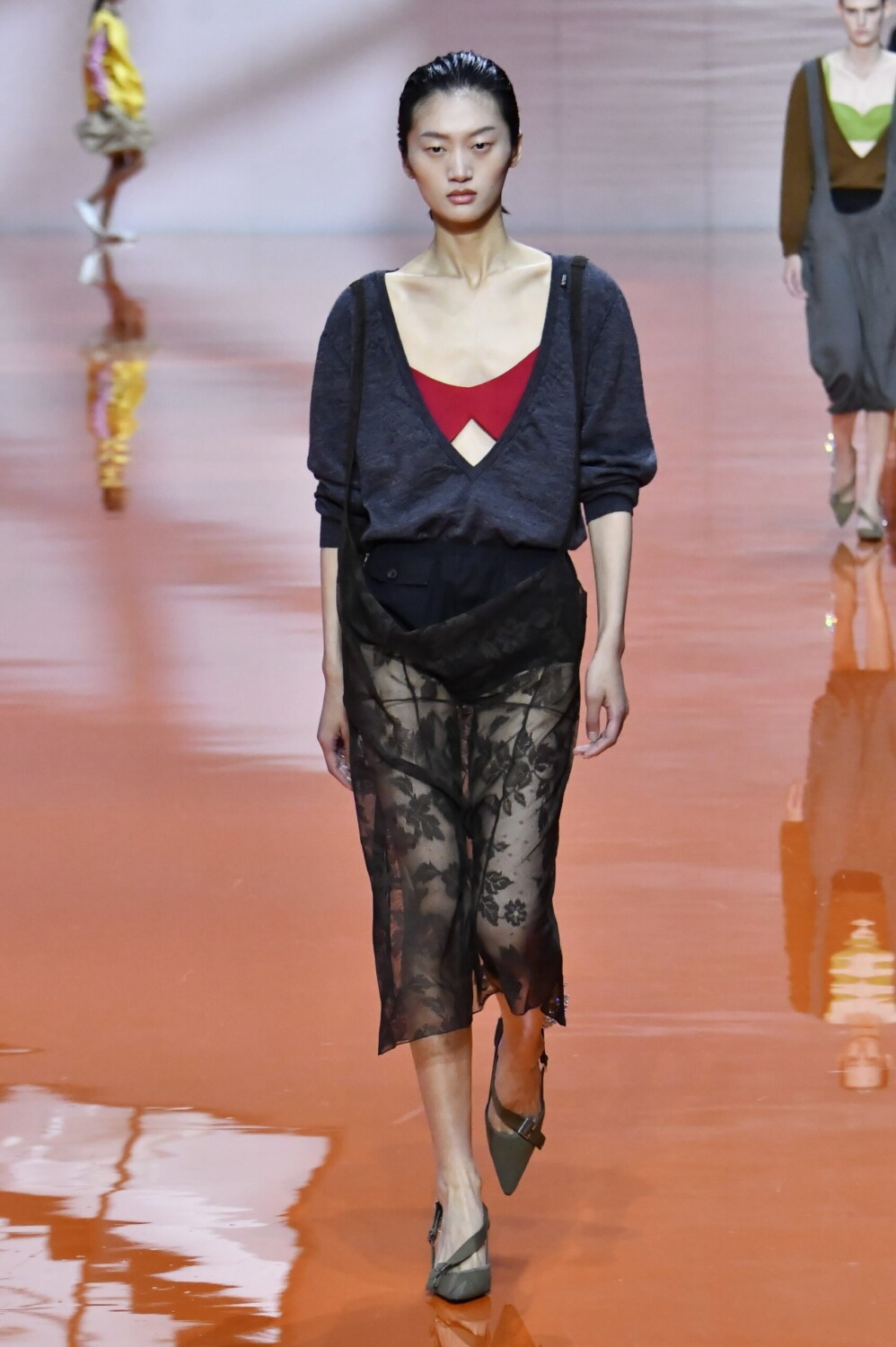
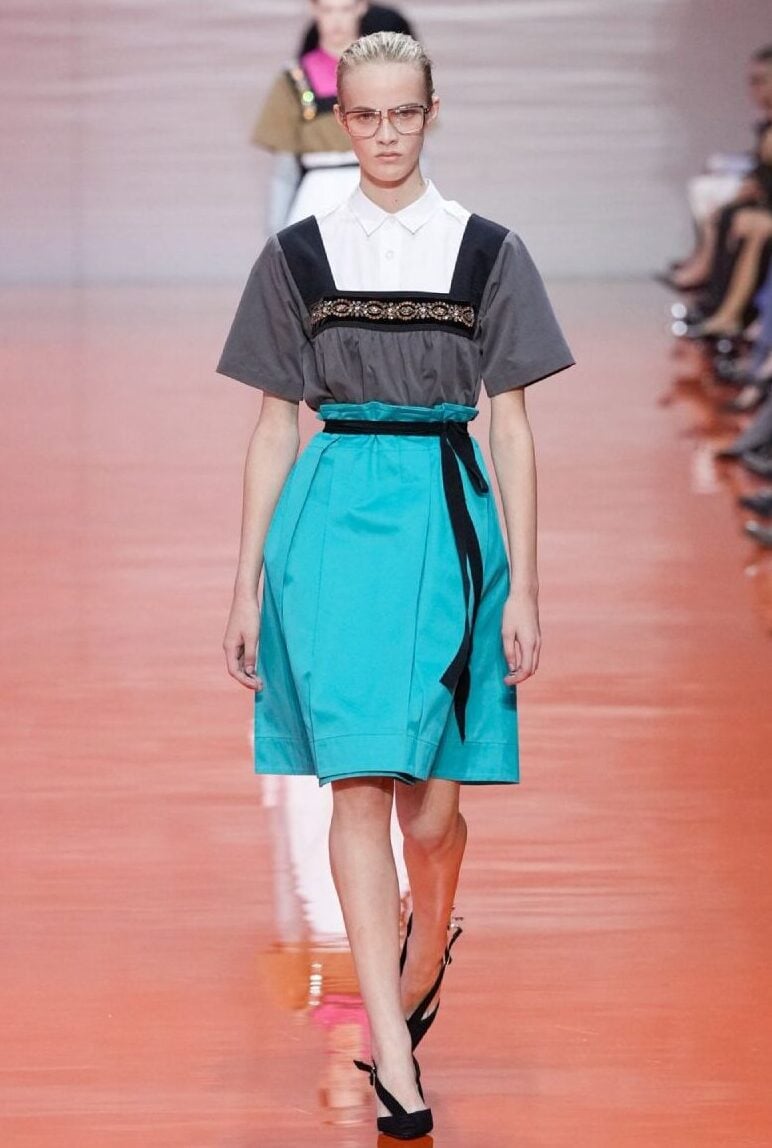
Institution by Galib Gassanof
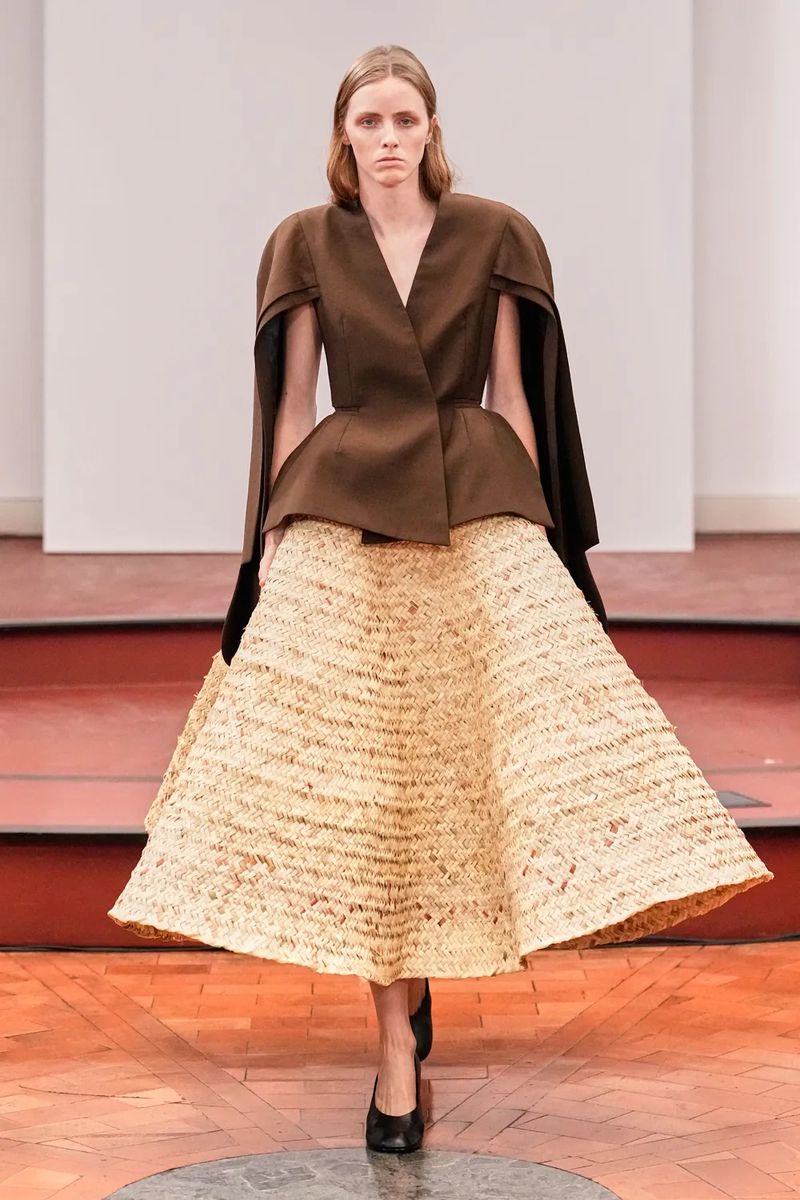
Far from conventional tailoring, Galib Gassanof elevates craftsmanship to its highest expression. In his second show for Institution, he celebrates his native Azerbaijan through the exploration of traditional materials and techniques.
Each garment seems more like a sculpture than something to wear: voluminous peplum tops, pieces constructed with denim cords—an experimental and sustainable reinterpretation of the material, part of the S|STYLE DENIM LAB project by Fondazione Sozzani—or woven reed pieces, crafted by a community of 13 artisans who still master this tradition.
Gassanof’s proposal makes it clear: fashion is also the memory of those who create it and the culture that sustains it.
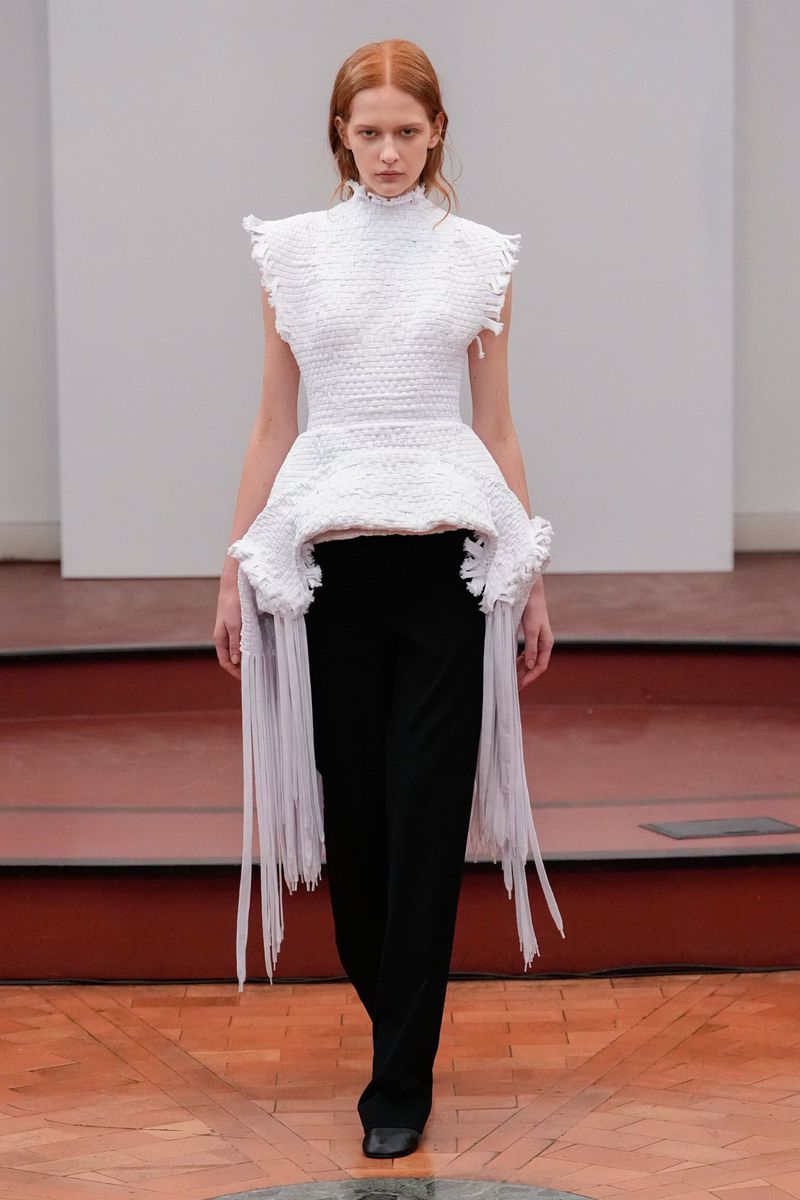
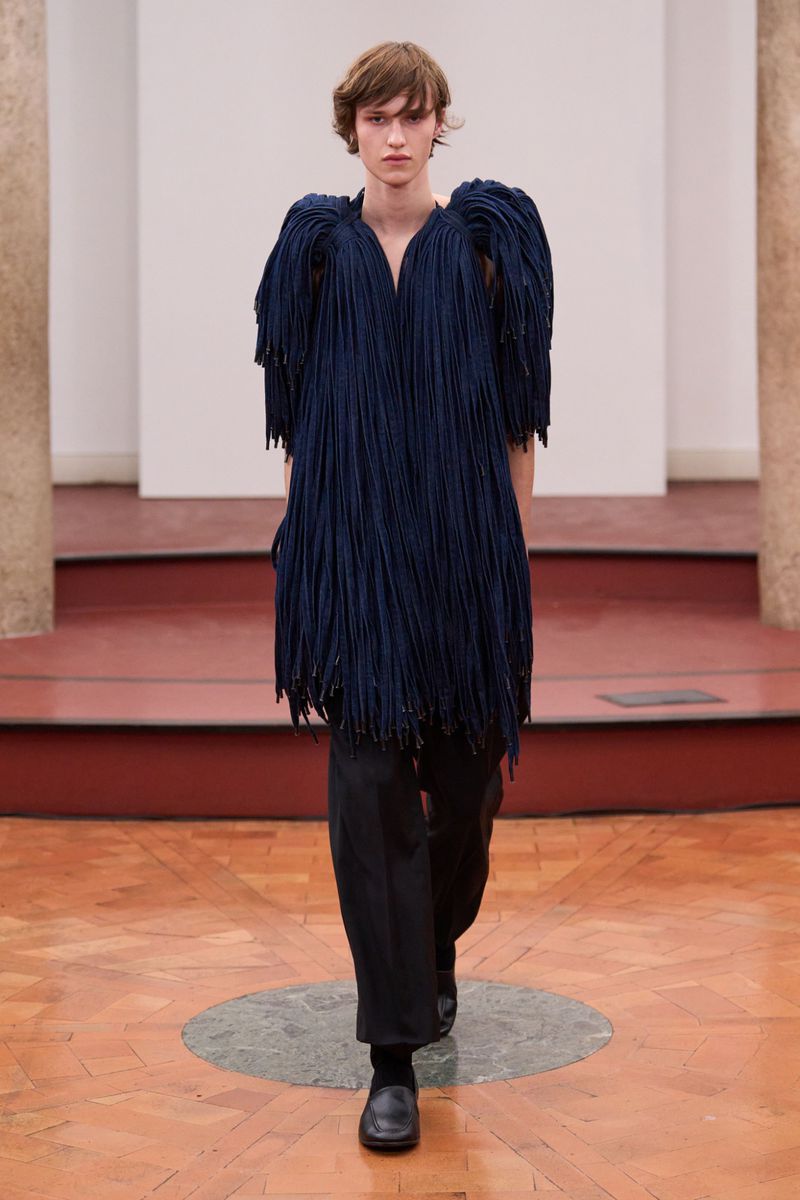
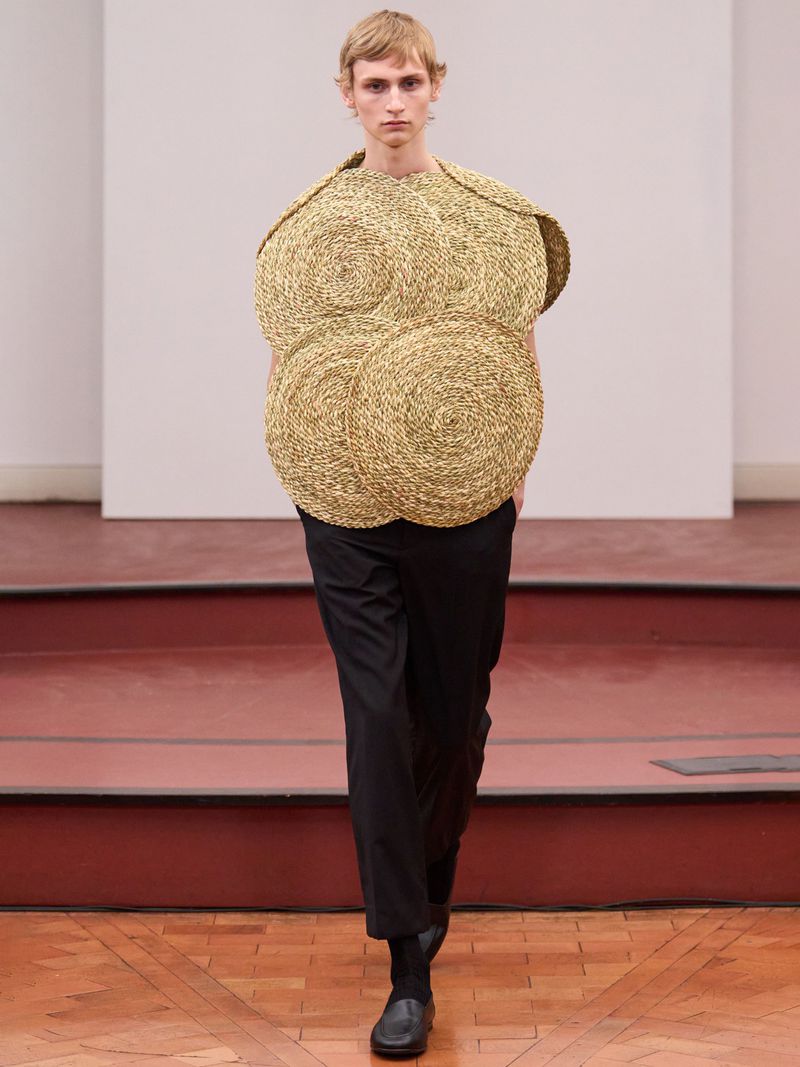
Giuseppe di Morabito
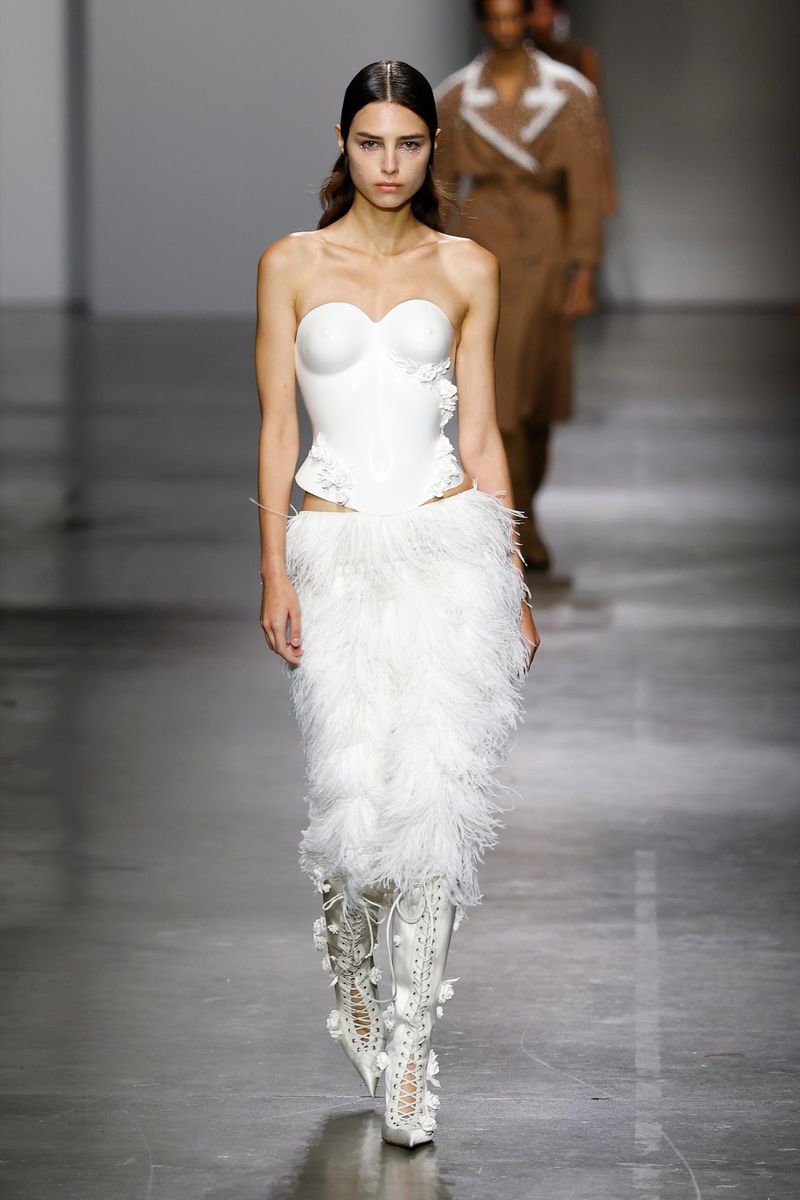
Giuseppe di Morabito presented in Milan the second chapter of a narrative begun last season. If in ‘Alone with the Stars’ his gaze was projected toward the future of AI and technological acceleration, with ‘The Fall of Icarus’ the designer turns inward and toward the past.
The myth materialized in resin bustiers molded to the body, draping imitating wet fabric, sweaters and lace with embedded pearls or crystals, ethereal feathers, and even metallic wings evoking Icarus.
For Morabito, every fall is also a rebirth. That’s why the collection transcends the simple runway show and becomes a narrative experience.
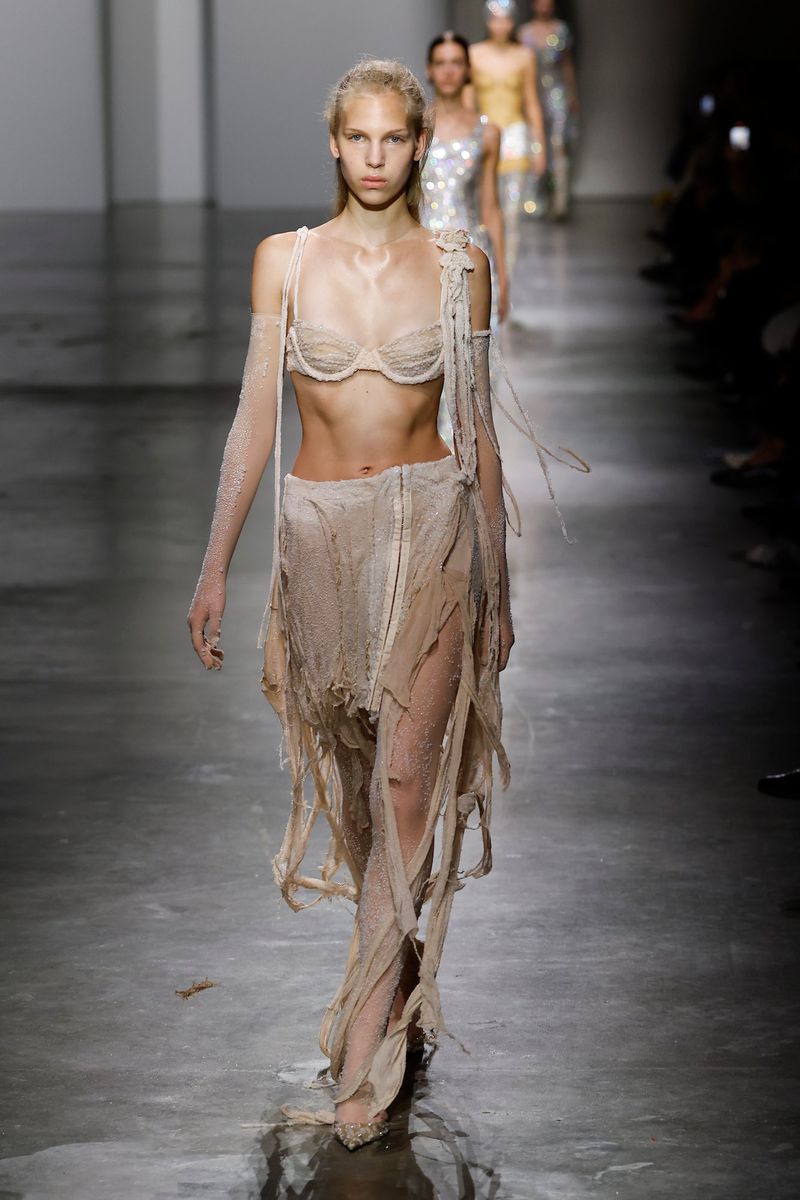
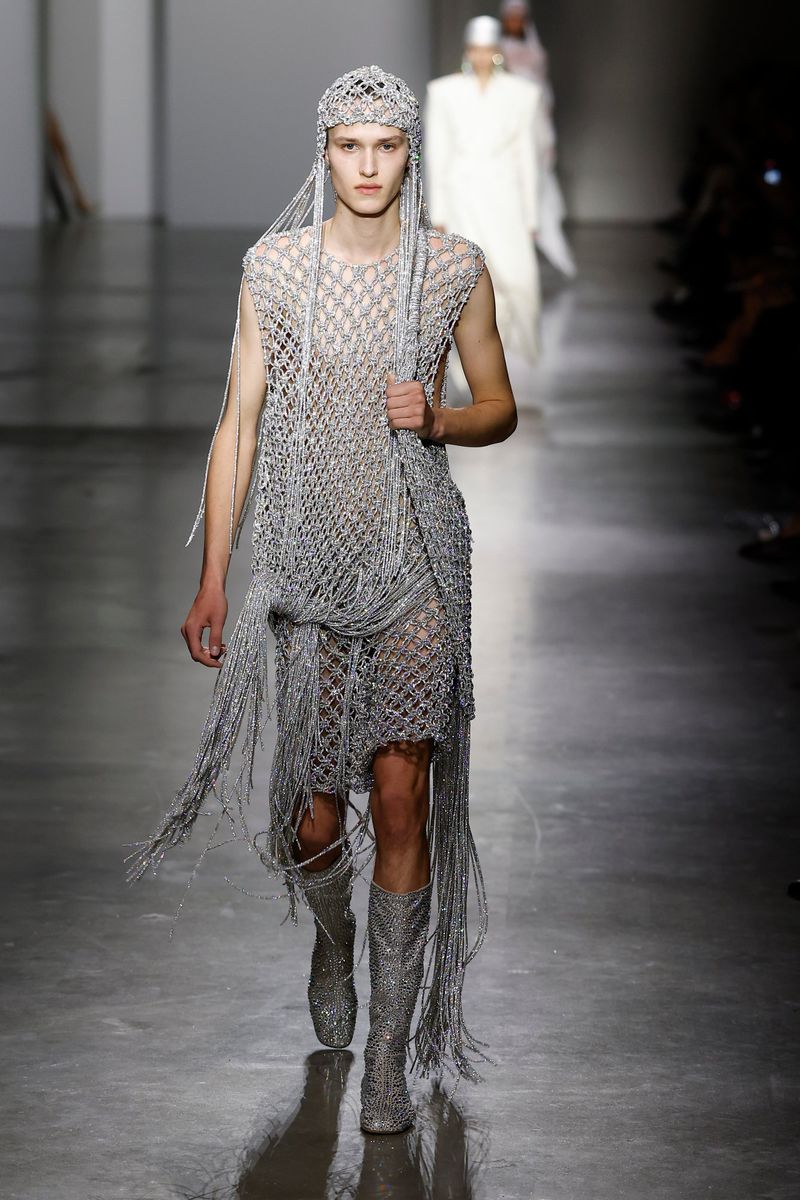
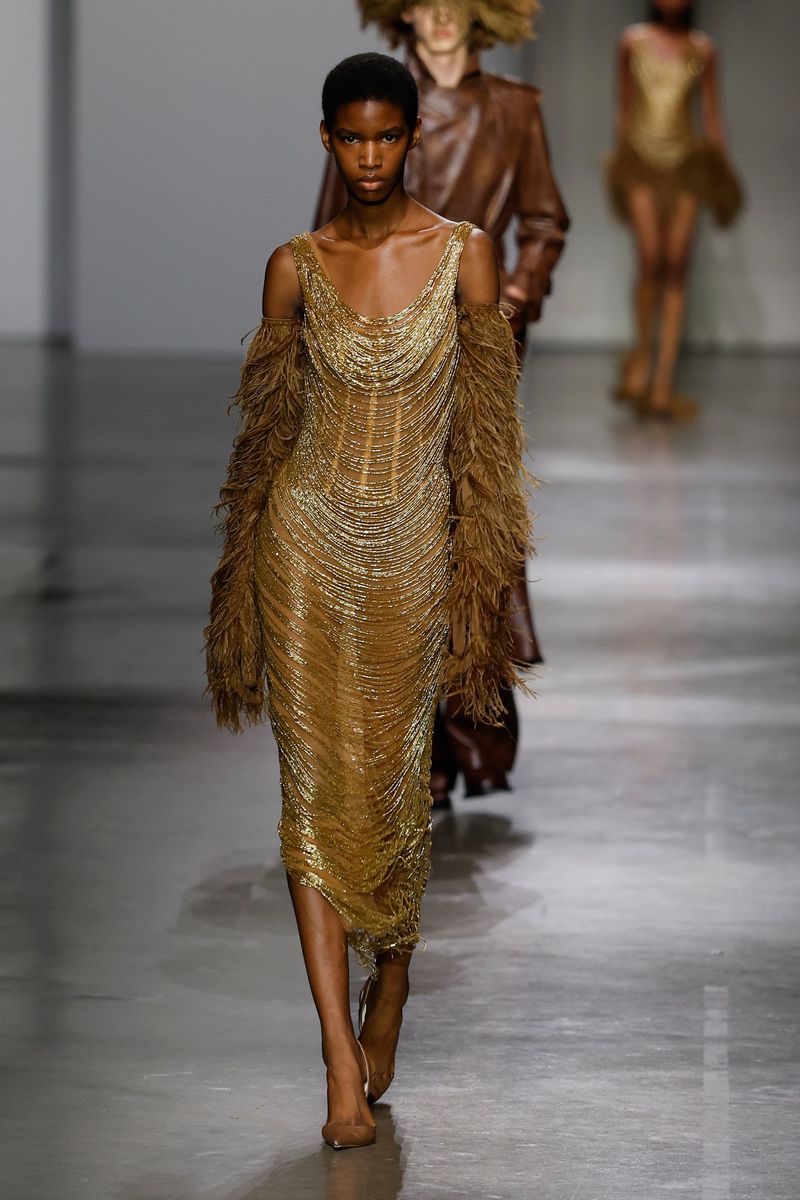
Bottega Veneta
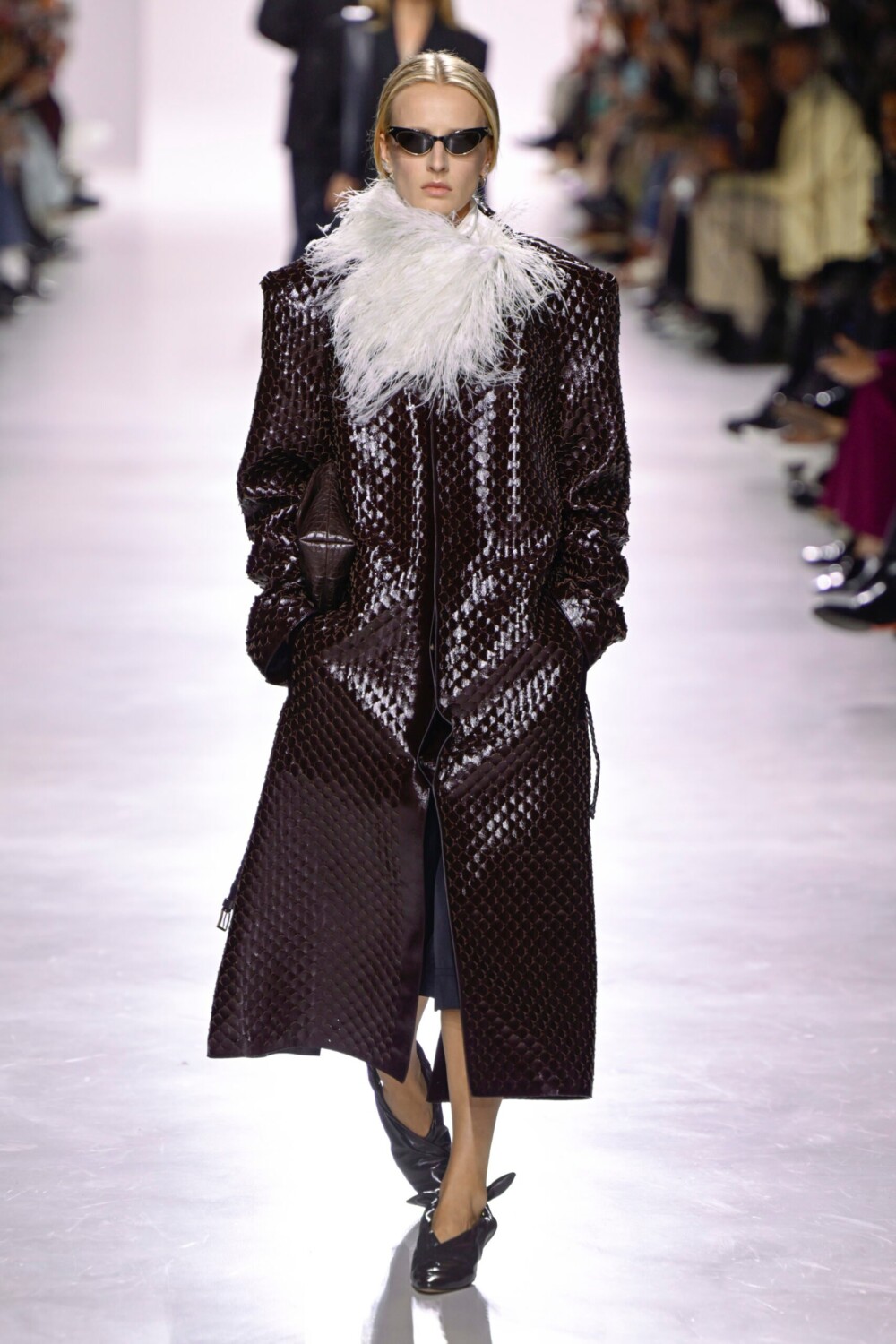
Edward Buchanan, Bottega Veneta’s first prêt-à-porter designer, highlighted how Louise Trotter’s debut clearly reflects the female perspective guiding the collection. Her silhouettes, predominantly wide and rectangular, evoke an ’80s aesthetic marked by broad, dropped shoulders.
Yet the strength of her proposal lies in mastering the brand’s DNA and in elevating fabrics and textures to starring roles. The intrecciato—the iconic leather-strip weaving technique developed in the 1960s—appeared in multiple applications: coats, dresses, collars, scarves, and bags. Among the most innovative materials was recycled fiberglass, sourced from industrial waste, used in sweaters and skirts. It offered an alternative to animal fur and brought a new dimension of sustainability to luxury.
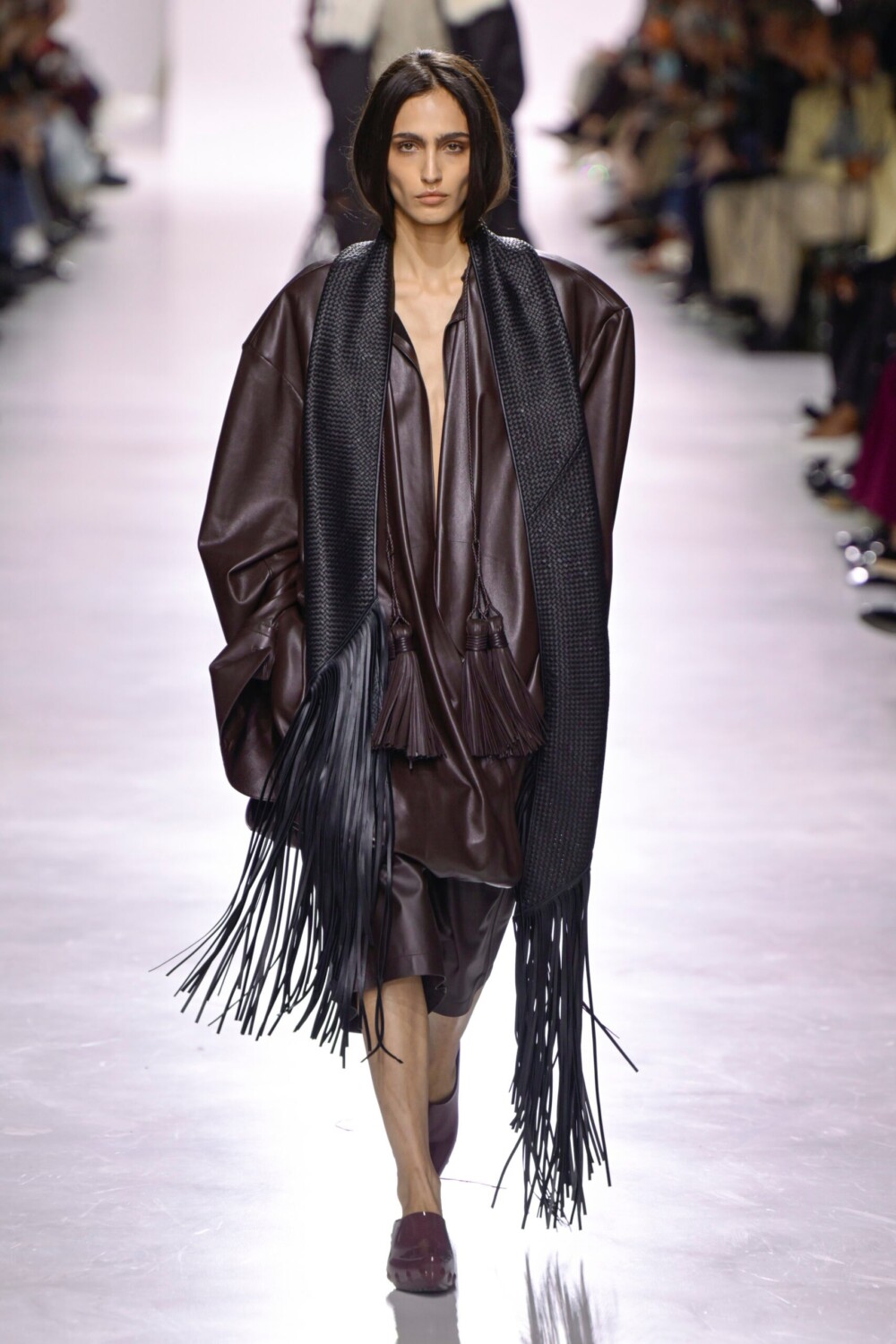
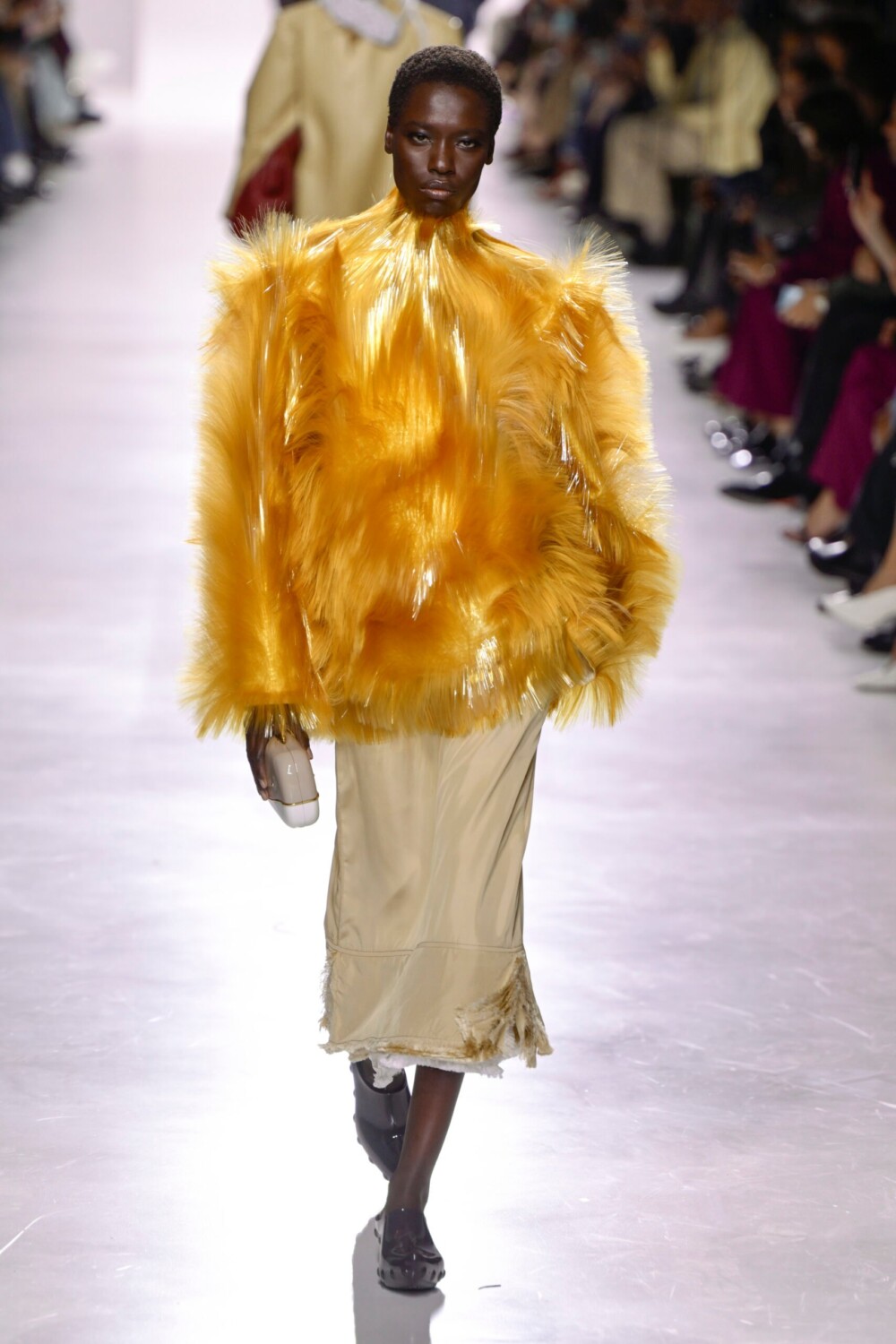
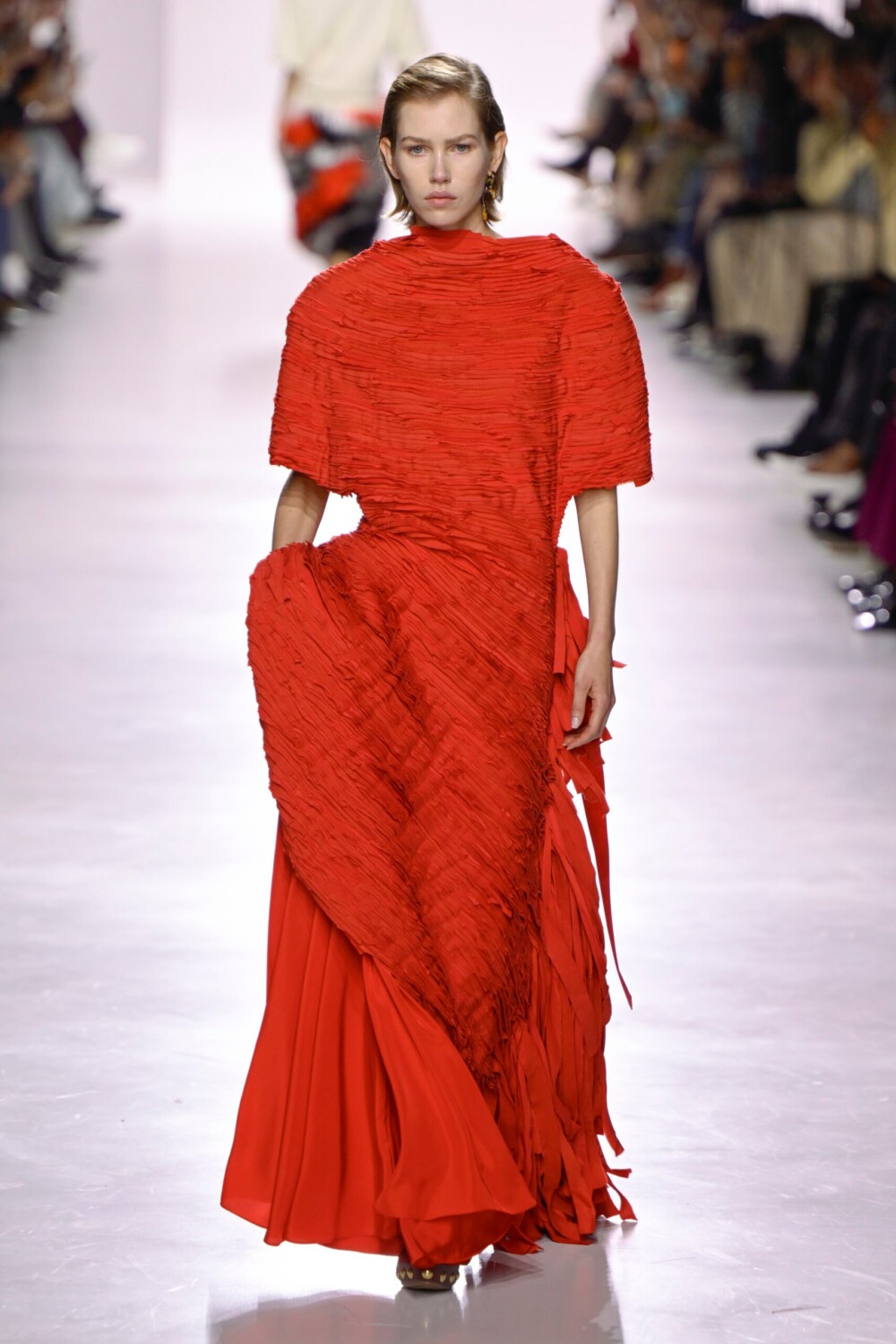
–
Follow us on Tik Tok @veinmagazine


